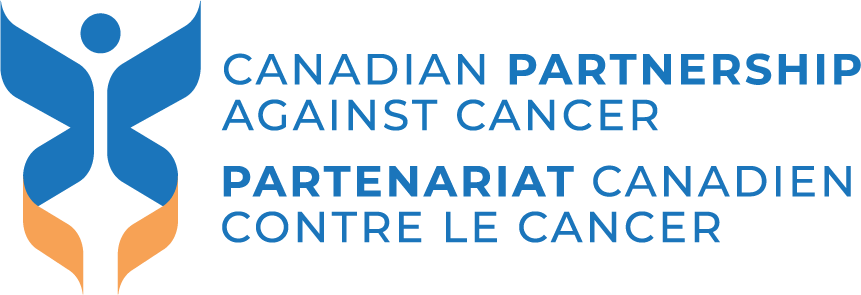With every piece of content we publish, we aim to consider and apply the following principles.
Audience, voice and tone
Audience
CPAC’s digital presence is mainly targeted towards professionals who work in cancer and health care (policy specialists, health-system administrators, healthcare professionals and researchers).
However, depending on the particular project, our audience may include any, or all, of these groups: patients, family members and caregivers; members of organizations active in cancer and chronic disease, including patient organizations, governments and their agencies; First Nations, Inuit and Métis organizations and communities; media representatives; and the wider public. While many of the people involved with our work have academic or clinical backgrounds, materials should be created to be useful to a broad and diverse audience, whenever possible.
Voice and tone
Our voice and tone – the way we speak in general and in specific situations – reflect who we are and our personality.
We adopt different tones depending on context and audience, but they share common elements:
- Professional, but conversational and trustworthy.
- Welcoming, friendly, inclusive.
- Positive, but realistic: We are making progress but also mindful of the seriousness of the problem, respectful of how difficult cancer is for people affected, and aware of the time required to affect meaningful change.
- Simple and straightforward.
- Collaborative: shared credit for shared efforts and achievements.
Consider the following guidelines to support these principles:
- Use active language: “We are doing it,” not “it will be done.”
- Always use simple, direct language.
- Avoid the “aggressive” style of terminology that is sometimes better-suited to advocacy/fundraising communications (e.g., “Help us fight cancer”).
Clear language
Choose the simple and familiar when possible. This includes sentence structure as well as vocabulary. Keep sentences and paragraphs short. Avoid barriers to understanding such as specialized vocabulary/jargon, acronyms and unnecessary words. Wherever possible, strive for a grade 8 reading level.

Illness and death

Morbidity and mortality

Cancer

Oncology
Evergreening
Be aware that content has a long shelf life. Ideally, content is written so that it is “evergreen,” meaning that it doesn’t become unclear or incorrect as time passes.
Avoid “to date” unless the date is clear or is specified.

The 2023 report

This year’s report

We launched the network in 2023

We launched the network last year

Between 2020 and 2024

Over the last four years
Inclusive language
The language that we use should reflect the diversity of all our audiences. Consider the following principles for writing welcoming and inclusive content.
Dignity
Writing about people requires an empathetic approach, using dignified language and prioritizing self-identification and community preferences. Always implement a person-first approach by avoiding labelling someone by the condition they have. Honour capitalization of community names and cultural terms in line with the group’s preferences. Capitalization is used to promote dignity, honour and cultural belonging.
Examples:
- Writing about disabilities: Use “person living with a disability” instead of “disabled person” or “special needs.” Likewise, “person who uses a wheelchair” instead of “wheelchair-bound” or “confined to a wheelchair.”
- Writing about age: Use “older adult” or “persons aged 65 and over” instead of “senior.” Use “long-term care homes” instead of “facilities” or “institutions.”
- Writing about communities and culture: Capitalize Black community; Indigenous Peoples; Deaf culture, community or person.
Gender neutrality
Always ask a person’s pronouns. Whenever possible, use gender neutral terminology to avoid making assumptions or allow bias to influence writing.
Examples:
- Use “they/them/theirs” when pronouns have not been confirmed.
- Use “chair” instead of “chairman” or “chairwoman” unless the individual specifies their preference.
- Use “breast/chest” cancer, tissue, etc. for inclusivity of individuals who regard “breast” as a characteristic specific to female identity, and may prefer using the neutral term “chest.”
- Use “cervical cancer screening for people who have or previously had a cervix” instead of “cervical cancer screening for women” and likewise, “prostate cancer screening for people with a prostate.”
Action
Research how to identify a specific community and find the most up-to-date terminology about that group. Refer to resources such as CPAC’s DEI Glossary (available to CPAC staff) and the Government of Canada’s Inclusive Writing Guidelines. Reach out to the person you’re writing about and ask how they would like to be identified. Doing so avoids the risk of generalizing about a specific person or group.
Examples:
- One individual may identify as a “person with autism,” while another may prefer “Autistic person” with a capital A.
- Some believe the use of Black, Indigenous, People of Colour (BIPOC), privileges whiteness and/or indicates a hierarchy of communities of colour and homogenizes them, as several unique identities exist under this umbrella and deserve to be named appropriately. As such, some individuals may prefer not to be identified as “BIPOC.”
- Many communities are moving away from the use of “vulnerable” and “marginalized.” In general, use “equity-denied” or “equity-deserving.”
- When referring to individuals experiencing precarious housing, use people-first language by saying “people or person experiencing homelessness or vulnerable housing” instead of “homeless person.” Some individuals may prefer the use of “houseless,” “unhoused” or “unsheltered” to describe their situation, as the word “home” often carries a personal connection and can mean more than just a location. See Improving Equity in Access to Palliative Care for some examples.
Evolution
Coming to terms with one’s identity takes time and can evolve. In addition, terms and definitions related to diversity, equity and inclusion may change over time as changes in thinking and attitudes occur. Accept the changes and update new identifying language in line with the individual’s preferences.
Examples:
- An individual has chosen to identify as a trans person. They may now identify as male, female, non-binary, or prefer not to identify with any of these categories. In addition, they may go by a new name and ask that their old name not be used. Ensure you respect each of these changes equally and refer to the individual as they identify in any and all communications.
- The same goes for sexual orientation – this is a spectrum, and an individual’s sexual identity can be subject to change and fluidity. They may also prefer specifics in identity such as being referred to as a “lesbian” individual, instead of categorizing them under the wider “LGBTQ+” or “gay” community.
